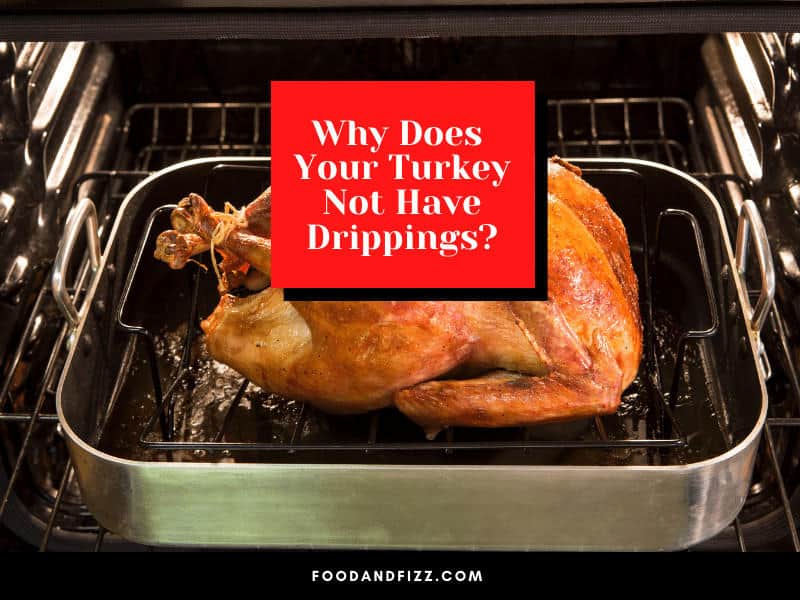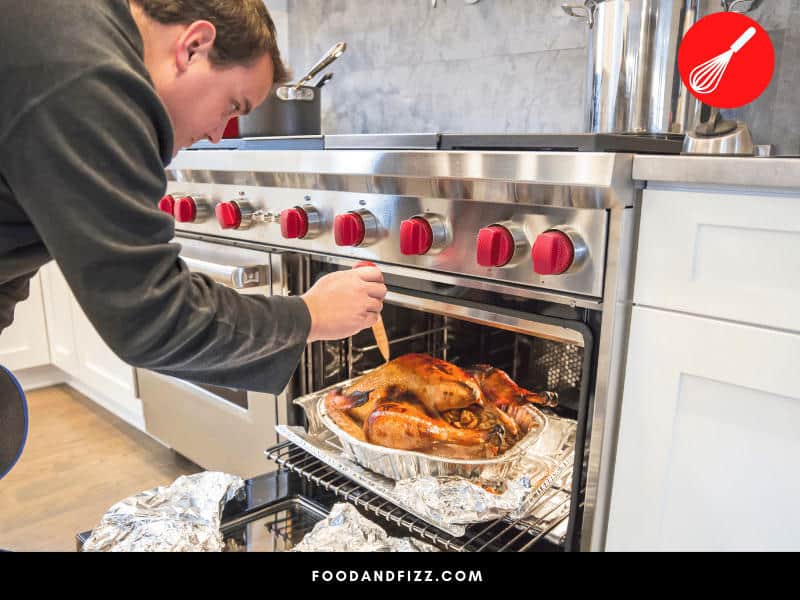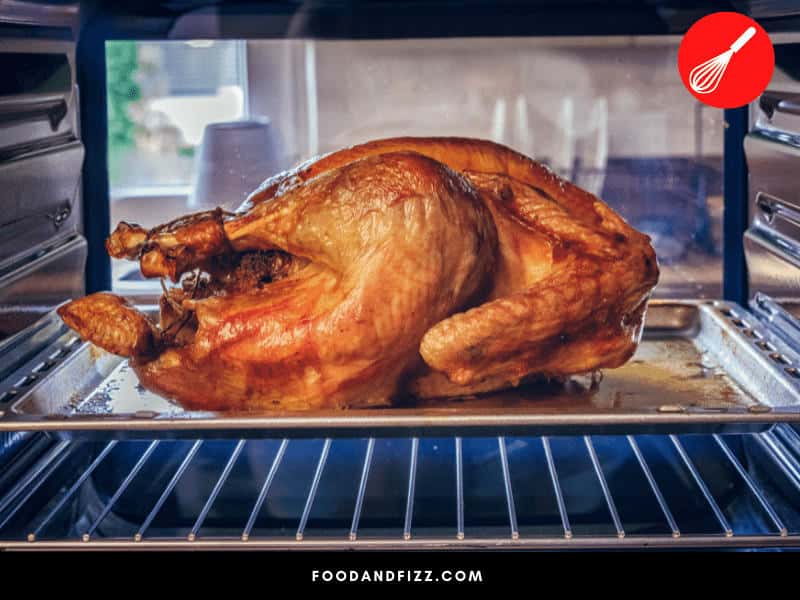Why Does Your Turkey Not Have Drippings? It has been said that a turkey without drippings is an atrocity. But far too often, those who are new to turkey roasting will unwittingly create a dry and flavorless turkey that’s absent of drippings.
Although no turkey will produce enough drippings to make gravy without also boiling the neck, these caramelized drippings are an essential ingredient in making some of the best turkey gravy you’ve ever tasted.
But what should you do if your turkey isn’t producing any drippings? Fortunately, it may not be too late for your bird. And even if you end up ordering take out tonight, these tips will help you create the juiciest turkey next time.
Why Does Your Turkey Not Have Drippings?
Most likely, the reason that your turkey doesn’t have drippings is because you didn’t baste it properly. Basting isn’t absolutely necessary- unless you want to have a juicy turkey with plenty of drippings. Also, you probably won’t see any drippings until the end of the roasting process.

How to Baste A Turkey to Produce the Most Drippings
Since many people claim that you can still prepare a crispy and juicy turkey without basting, why would you even bother putting in the extra work? After all, there are better things that you can do with your time, such as watching a football game.
But basting is a key factor in producing drippings. Instead of basting every thirty minutes as many people recommend, you should only baste every forty-five minutes. Every time you open your oven, the turkey will start to cool, so basting less frequently will shorten the cooking time.
You can either use a traditional turkey baster or a ladle to baste your turkey in cooking liquids to bring out the flavor and increase the amount of drippings produced. An hour before the turkey is done, you should baste it in olive oil to make it crispier.

Oven Temperature Can Affect Turkey Drippings
Ideally, turkey should be cooked at 325 to 350 degrees Fahrenheit for thirteen minutes per pound. So, if your turkey weighs between twelve to fourteen pounds, you’ll need to cook it for about three hours. If you cook your turkey at a lower temperature, it may not cook all the way through.
But what does that have to do with drippings? Cooking turkey at temperatures higher than 350 degrees Fahrenheit will cause it to dry out and even burn before it’s cooked through. And a dry turkey isn’t going to produce drippings.
Additionally, you probably won’t notice many drippings until later on in the cooking process, so if your turkey has been in the oven for less than an hour, you shouldn’t worry about not having drippings just yet.

How to Create Extra Drippings for Turkey Gravy
There’s no reason to worry about your turkey not producing enough drippings to make gravy. The truth is that you’ll never be able to make homemade turkey gravy on drippings alone. That’s where the giblets and neck come into play.
Sure, you can always do it the easy way and make pre-packaged turkey gravy. Most likely, your family and guests won’t complain. Actually, some premade gravies taste almost as good as if they were homemade!
But if you’re determined to make true turkey gravy, all you need to do is simmer the neck and giblets in water, salt, pepper, onions, and celery for about two hours.
Then combine the broth with your turkey drippings, and viola! You have homemade turkey gravy!

How to Save a Dry, Bland Turkey
If you don’t have any drippings, there’s a good chance that your turkey may be dried out and taste bland. But you don’t need to call your favorite take-out joint just yet. There’s still hope left for your dry turkey.
And the solution is much easier than you may think. Simply pour a generous amount of gravy and seasoned broth over your turkey and place it back in the oven for about fifteen minutes at 200 degrees Fahrenheit.
Since you don’t have any drippings, you may need to use the neck and giblet broth and a premade gravy, but the result will be the same.
This technique will bring your turkey back to life and turn it into a mouthwatering, juicy, and flavorful main dish that you can proudly serve to your family.
Conclusion To Why Does Your Turkey Not Have Drippings?
Some people insist that it’s not necessary to baste a turkey. And maybe it isn’t, but not only can the turkey dry out from being exposed to high oven temperatures for hours, you’re going to need to baste your turkey if you want it to produce drippings.
Drippings definitely aren’t the only way to make turkey gravy, but it is indeed the traditional and most flavorful way. If you’re new to roasting turkey, it may be helpful to find some homemade turkey gravy recipes.
Everyone was once a beginner at roasting turkey- even your mom and grandma. So, if you end up ordering pizza or using a packed gravy mix, no worries. You’ll do better next time. As long as you don’t burn the house down, you’ll be just fine.

Frequently Asked Questions To Why Does Your Turkey Not Have Drippings?
How Long Can You Keep Turkey Drippings?
Some people store turkey drippings in a sealed container in the coolest part of their refrigerator and continue to use them for about a month to make gravy. But if you want to adhere to strict safety standards, you should really only keep the drippings for about a week.
How Do You Discard Turkey Grease?
As with any type of grease, you should never pour turkey grease down your sink or discard hot drippings in the garbage. Instead, you should pour them into an empty soup can after the grease has cooled, freeze it, and then throw it in the trash. Alternatively, you can mix sawdust or cat litter in with the cooled grease before discarding it.
What Should You Do with the Juice From the Turkey?
Turkey juice is commonly referred to as drippings, and it’s often used to make homemade turkey gravy after the grease and fat has been removed with a grease separator or poured into a glass measuring cup.

